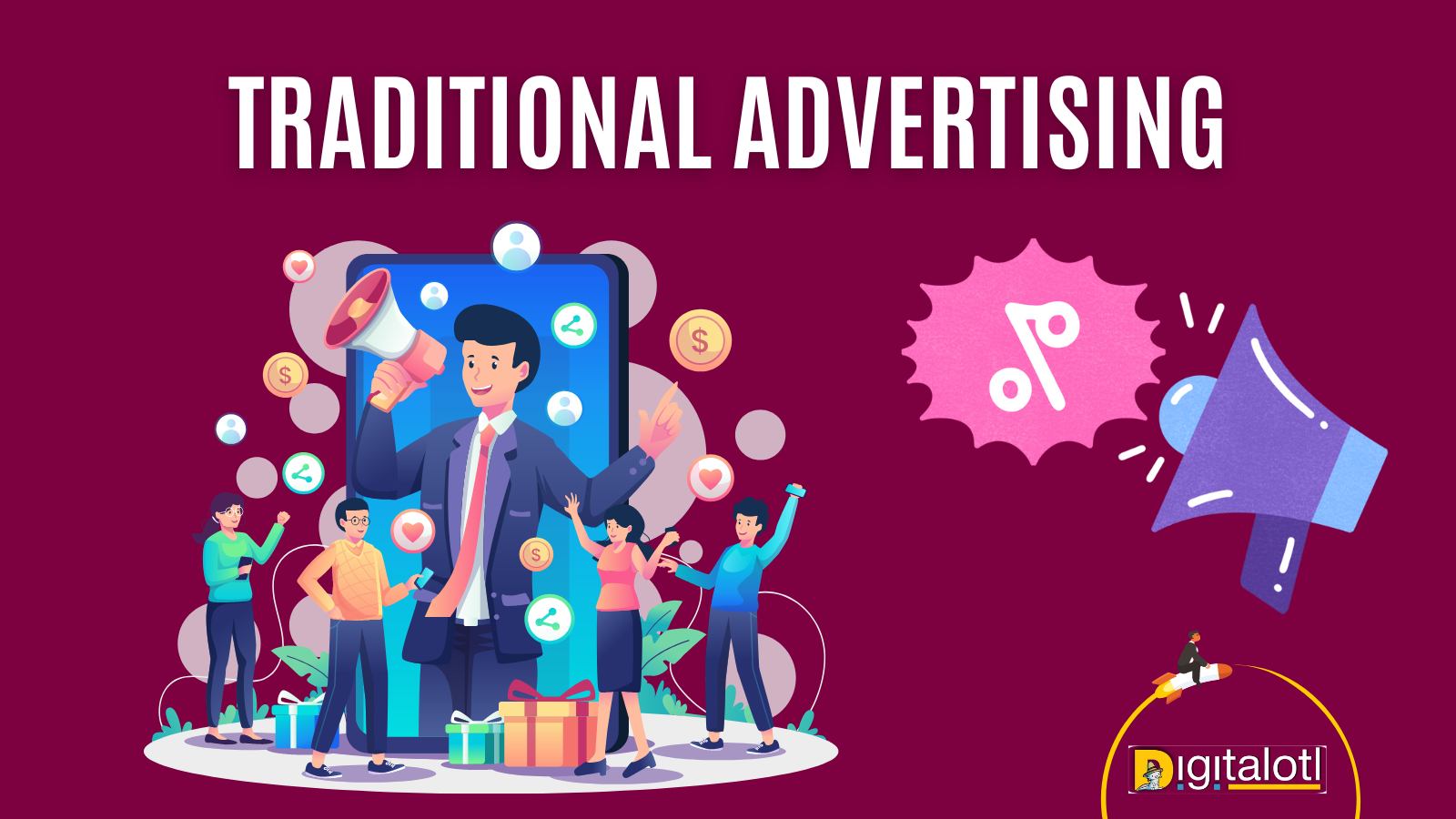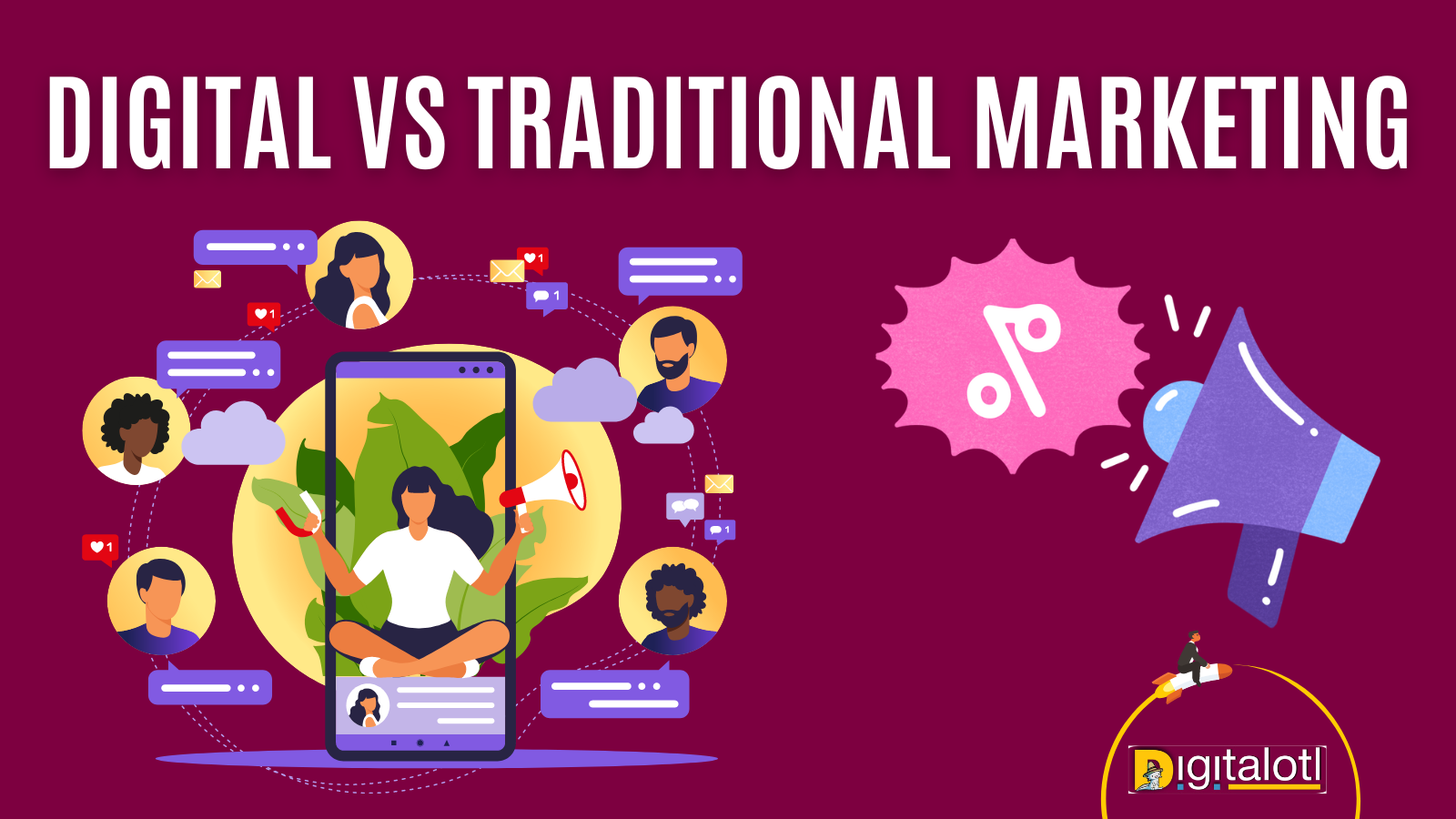In today’s fast-paced and technologically advanced world, businesses are constantly searching for effective ways to reach their target audience and drive growth. Two prominent strategies that often come into consideration are digital marketing and traditional advertising.
Both approaches have their merits, but it’s essential to understand their differences, advantages, and effectiveness to make informed decisions about your marketing efforts. In this article, we’ll delve into the world of digital marketing and traditional advertising, comparing their effectiveness and exploring the various marketing channels they encompass.
Table of contents
Digital Marketing: Unleashing the Power of Online Marketing

Digital marketing has transformed the marketing landscape, enabling businesses to harness the immense potential of the Internet to connect with their customers. With a plethora of online marketing channels available, businesses can tailor their strategies to specific target demographics and achieve measurable results. Here are some key aspects of digital marketing that make it an invaluable tool in today’s competitive market:
Targeted Reach
One of the most significant advantages of digital marketing is its ability to reach a highly targeted audience. Through techniques like search engine optimization (SEO), social media marketing, and email marketing, businesses can connect with individuals who have already expressed an interest in their products or services. This targeted approach ensures that marketing efforts are directed toward those most likely to convert into customers.
Cost-Effectiveness
Compared to traditional advertising, digital marketing offers a cost-effective solution for businesses, particularly for small and medium-sized enterprises (SMEs) with limited marketing budgets. Online platforms allow businesses to optimize their marketing campaigns based on performance, allocate budgets more efficiently, and track return on investment (ROI) with precision. This level of flexibility and control ensures that every marketing dollar is well-spent.
Measurable Results
Unlike traditional advertising, which often presents challenges in tracking and measuring results, digital marketing provides in-depth analytics and insights. Marketers can analyze key performance indicators (KPIs), such as website traffic, conversion rates, and engagement metrics, to evaluate the effectiveness of their campaigns. This data-driven approach empowers businesses to refine their strategies and maximize their marketing efforts continuously.
Personalization and Interactivity
Digital marketing enables personalized communication and interactivity between businesses and their customers. Through email marketing campaigns, personalized website experiences, and targeted advertising, businesses can create meaningful connections with their audience. This personalized approach fosters trust, loyalty, and customer satisfaction, ultimately leading to higher conversion rates and customer retention.
Traditional Advertising: The Power of Time-Tested Tactics

While digital marketing has gained significant traction in recent years, traditional advertising methods still hold value and can effectively complement online strategies. Traditional advertising encompasses various offline channels, including print, radio, television, and billboards. Here are some reasons why traditional advertising continues to play a role in marketing strategies:
Wide Audience Reach
Traditional advertising allows businesses to reach a broad audience, especially those who may not be active online. Television commercials, newspaper ads, and billboards have the potential to capture the attention of a vast segment of the population. For businesses targeting a diverse customer base, traditional advertising channels can provide extensive exposure and brand visibility.
Tangible and Credible
Traditional advertising methods often provide a tangible presence, offering credibility and trustworthiness to businesses. For instance, print ads in reputable publications or billboards in high-traffic areas can convey a sense of legitimacy and establish brand authority. These physical manifestations of marketing efforts can resonate with consumers and instill confidence in their purchasing decisions.
Local Targeting
Traditional advertising channels excel in reaching local audiences. For businesses with a geographically focused customer base, tactics like local newspaper ads or radio spots can be highly effective in generating awareness and driving foot traffic to physical stores. This localized approach allows businesses to establish a strong presence in their communities and engage with nearby customers.
Complementary to Digital Strategies
Traditional advertising can work synergistically with digital marketing efforts to create a cohesive brand presence. By utilizing both online and offline channels, businesses can reinforce their messaging and increase brand recognition. A well-integrated marketing strategy that leverages the strengths of both digital and traditional advertising channels can yield impressive results.
Marketing Channels: Choosing the Right Mix for Success

When it comes to marketing channels, businesses have a wide array of options at their disposal. Here are some of the most popular channels in digital marketing and traditional advertising:
Digital Marketing Channels
- Search Engine Optimization (SEO)
- Pay-Per-Click (PPC) Advertising
- Social Media Marketing
- Content Marketing
- Email Marketing
- Influencer Marketing
- Affiliate Marketing
Traditional Advertising Channels
- Television Commercials
- Radio Advertising
- Print Advertising (Newspapers, Magazines)
- Outdoor Advertising (Billboards, Banners)
- Direct Mail Marketing
- Events and Trade Shows
The key to a successful marketing strategy lies in selecting the right mix of channels that align with your business goals, target audience, and available resources. A comprehensive approach that combines digital and traditional advertising channels can help you maximize your reach and engagement, ultimately driving conversions and revenue.
Conclusion
In conclusion, the debate between digital marketing and traditional advertising should not be approached as an “either-or” scenario. Both approaches possess unique strengths and can be effectively utilized to achieve marketing objectives. By understanding the advantages and effectiveness of each, businesses can design a comprehensive marketing strategy that harnesses the power of digital and traditional advertising channels. Remember, success lies in finding the right mix that aligns with your business goals, target audience, and available resources.
Frequently Asked Questions (FAQs)
Q1. Which is better: digital marketing or traditional advertising?
Both digital marketing and traditional advertising have their advantages and effectiveness. The choice depends on various factors, including your target audience, marketing objectives, and available resources. It’s often beneficial to combine both approaches to leverage their respective strengths and create a well-rounded marketing strategy.
Q2. Is digital marketing more cost-effective than traditional?
Digital marketing typically offers a higher level of cost-effectiveness compared to traditional. Online platforms allow for better budget allocation, precise targeting, and performance tracking, ensuring that your marketing budget is utilized efficiently.
Q3. Can traditional advertising work alongside digital?
Absolutely! Traditional advertising can complement digital marketing efforts and vice versa. Integrating both approaches can help reinforce your brand messaging, increase brand recognition, and reach a wider audience across different channels.
Q4. Which marketing channels should I focus on?
The selection of marketing channels depends on your business goals, target audience, and available resources. Conduct market research, analyze your target audience’s preferences, and evaluate the effectiveness of different channels to determine the optimal mix for your specific needs.

